Abandoned History: The Life and Times of Edsel, a Ford Alternative by Ford (Part II)

Ford successfully orchestrated a splashy live television musical debut for its new brand Edsel in the fall of 1957. The program was a culmination of a multi-year project to establish a new division of Ford that would compete more directly with the likes of Oldsmobile, Buick, and DeSoto. Edsels promised to be notably different from the Mercury with which it shared most everything except styling.
Edsel was to be much more value-conscious than the new-for-’58 unibody Lincolns, which sought to move the brand upmarket after the almost instantaneous discontinuation of the Continental Division. After Frank Sinatra and Bing Crosby ushered in the Edsel name it was time to show off the all-new models in showrooms, and introduce a supposedly excited American consumer to the lineup.
A new domestic car brand was a notable and unusual occurrence by the Fifties. As the passenger car was well-established by that time, the small brands that popped up and quickly went bankrupt in the earlier part of the century were a distant memory. Very few new American car brands were introduced between the end of WWII and Edsel’s 1958 debut.
Edsel promised futuristic styling, advanced and user-friendly features, and great build quality. All those positive characteristics were included in Edsel’s exciting seven-model debut for the 1958 model year. All of Edsel’s cars were full-size, and though Ford didn’t admit it they were tied very closely to Mercury counterparts.
Four of the company’s offerings were sedan nameplates, and three were wagons. Edsel’s model names have all been reassigned to other things in the course of history, whether that be a vehicle from Ford, GM, AMC, a bug killer, or a type of shorts. You pick your favorite.
In order of luxuriousness (price), the lower end of the sedan range was represented by Ranger, with the Pacer as a small step upward. The middle and upper-level Edsel sedans were the Corsair and Citation. All sedan-based models were offered in various body types, which we’ll address individually. The wagon enthusiast on a budget selected the Roundup in 1958 or could spend more money on a Villager or the top-tier Bermuda.
Before we have a discussion on pricing and brand positioning, it’s important to cite the context into which Edsel was launched. As mentioned in our Lincoln Mark coverage, 1958 was a disastrous year for the U.S. economy. Car sales were hit especially hard: All manufacturers saw a drastic drop, as it seemed consumers as a whole decided they did not need to replace their car so often, and certainly not with a 1958 model.
Domestic car sales fell 31 percent over 1957, which combined with a serious industrial slowdown and rising interest rates. The interest rate escalation started in 1955 and 1956 and culminated in 1957 to kick the economy in the teeth and kill the housing market too. The so-called Eisenhower Recession lasted only through May of 1958 before recovery began, but was serious enough to cost domestic car manufacturers a lot of money.
Prior to launch, Edsel marketing assured their cars had “more you ideas.” In an approach Infiniti would take to the next level about 32 years later, the Edsels were only shown in early marketing via a very blurred picture, under a sheet, or wrapped in paper like those Nineties Enterprise ads. Prior to The Edsel Show, the new and radical designs had been teased only through those methods.
Even dealer deliveries were secretive, as when the cars were shipped to showrooms they were covered. Ford required the Edsels to stay covered on lots until the brand was launched. The desire for hype trumped any thought that consumers needed to see an upcoming automobile.
But what did that matter? The Edsel’s features were supposed to wow customers who arrived in showrooms and pull them from their trusty Oldsmobiles. We’ll address styling for Edsels separately in the series, but all models shared ingenious interior features not available at other brands no matter the price.
The Edsel’s dash design was intended to pave the way for driver-focused comfort and convenience motoring, as signified by all the elegant ladies in the marketing wearing their white gloves. Gauges were located in a trapezoidal pod in front of the driver, with individual circular dials for the tachometer, fuel, a clock, as well as temperature and oil pressure. Above them all was a new feature not seen before: A speedometer within a lighted dome.
No simple circular or horizontal speedo here! The glass-encased speedometer rotated left and right horizontally, pivoting on a visible y-axis within the assembly like a spinning top. Also innovative (for the time) was a panel of warning lights to the right of the wheel and below the temperature gauges. The panel was inspired by the sort of warning lamps aircraft used and told the driver if there was a temperature issue, low oil, or if the parking brake was activated.
A very special and immediately hated feature of the ’58 Edsels was Teletouch; transmission controls located in the center of the steering wheel. We’ve covered the system extensively in our Abandoned History series on the Cruise-O-Matic transmission. Edsel’s system was interesting, as it was different from the dash-mounted Keyboard Control used in similar vintage Mercury vehicles. Edsel’s was more complicated and used electro-mechanical powered switchgear. Edsel made Teletouch standard on Corsair and Citation models, but it was an option on Ranger and Pacer, and optional on all three wagons.
Other innovations were safety-oriented, at a time when the American passenger car often smashed, impaled, or otherwise maimed a driver in crashes. Ford integrated some of the features of its Lifeguard safety package, available as an optional extra in Fords circa 1956-1957. Seat belts were still optional, but double latch doors, child door locks at the rear, and a deep dish steering wheel were standard. The wheel center was less likely to stab through the chest and kill the driver in an accident if it was deep dish! Also standard were self-adjusting brakes and a remotely operated trunk.
Unique features, unique styling, but where was Edsel supposed to be in Ford’s lineup? Edsel was a division attached to Ford rather than Lincoln-Mercury, so the natural assumption was that it would be less expensive. But that logic only held up in some circumstances, as in others the Edsel offering was priced higher than the Mercury upon which it was based. There was even a Ford sedan that was more expensive than the similar Edsel or Mercury, too. Let’s talk sedan pricing data.
At the lower end, the Edsel Ranger was priced from $2,484 ($25,735 adj.) to $2,643 ($27,382 adj.). Ranger was analogous to the Ford Fairlaine 500 at $2,410 to $3,138 ($24,968 – $32,511 adj.), and the Mercury Medalist that asked $2,547 to $2,617 ($26,388 – $27,113 adj.). In this case, the Ford could cost much more than the Edsel or the Mercury. This was the only instance where Ford had a product very similar to the Edsel and Mercury offerings.
The lower-mid level Pacer asked $2,700 to $2,993 ($27,973 – $31,009 adj.), or in Mercury Monterey guise was $2,652 to $3,081 ($27,476 – $31,920 adj.). In that segment, the Mercury was the most expensive of the two. Though the more expensive Corsair was related to various Mercury models like the Turnpike Cruiser, Mercury did not offer a direct competitor. Corsair asked from $3,311 to $3,390 ($34,303 – $35,122 adj.).
As mentioned above, the flagship sedan model at Edsel was the Citation. It was a pricy one, at $3,500 to $3,766 ($36,261 – $39,017 adj.). The Citation’s top-end price exceeded that of the equivalent Mercury Montclair, which was priced from $3,236 to $3,597 ($33,526 – $37,266 adj.). But no Edsel could touch Mercury’s top offering the Park Lane, which was priced between $4,280 and $4,405 ($44,343 – $45,638 adj.) in 1958.
Was Edsel positioned below or above Mercury? That was dependent on the model and trim in consideration, and cause buyer confusion from the get-go. And speaking of models, we’ll pick up there next time and proceed with the various Edsels that lasted only one model year.
[Images: Ford]

Interested in lots of cars and their various historical contexts. Started writing articles for TTAC in late 2016, when my first posts were QOTDs. From there I started a few new series like Rare Rides, Buy/Drive/Burn, Abandoned History, and most recently Rare Rides Icons. Operating from a home base in Cincinnati, Ohio, a relative auto journalist dead zone. Many of my articles are prompted by something I'll see on social media that sparks my interest and causes me to research. Finding articles and information from the early days of the internet and beyond that covers the little details lost to time: trim packages, color and wheel choices, interior fabrics. Beyond those, I'm fascinated by automotive industry experiments, both failures and successes. Lately I've taken an interest in AI, and generating "what if" type images for car models long dead. Reincarnating a modern Toyota Paseo, Lincoln Mark IX, or Isuzu Trooper through a text prompt is fun. Fun to post them on Twitter too, and watch people overreact. To that end, the social media I use most is Twitter, @CoreyLewis86. I also contribute pieces for Forbes Wheels and Forbes Home.
More by Corey Lewis
Latest Car Reviews
Read moreLatest Product Reviews
Read moreRecent Comments
- ToolGuy If these guys opened a hotel outside Cincinnati I would go there to sleep, and to dream.
- ToolGuy Michelin's price increases mean that my relationship with them as a customer is not sustainable. 🙁
- Kwik_Shift_Pro4X I wonder if Fiat would pull off old world Italian charm full of well intentioned stereotypes.
- Chelsea I actually used to work for this guy
- SaulTigh Saw my first Cybertruck last weekend. Looked like a kit car...not an even panel to be seen.


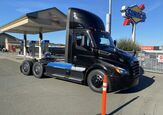
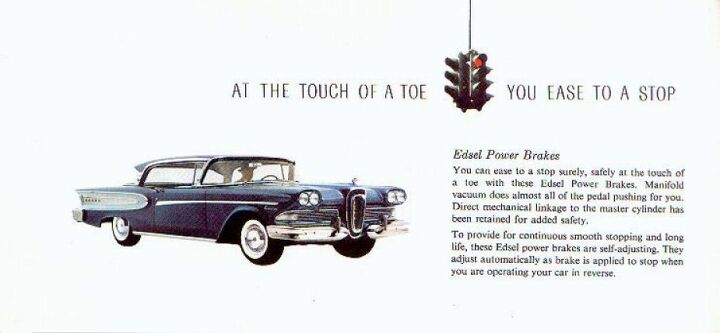


















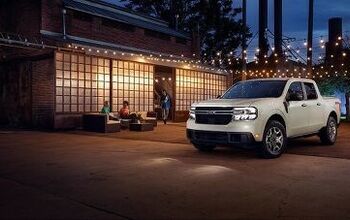
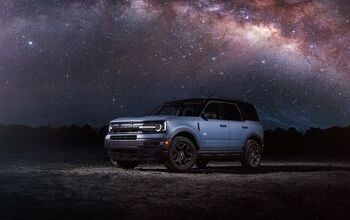
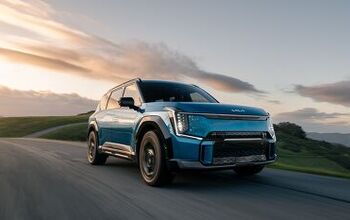
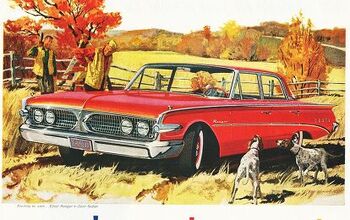
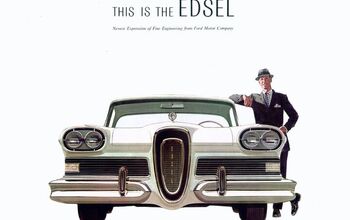
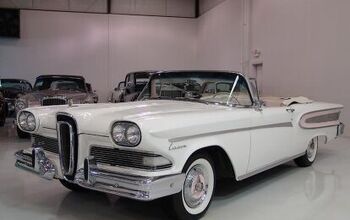
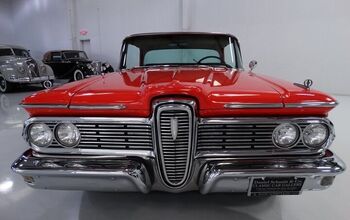
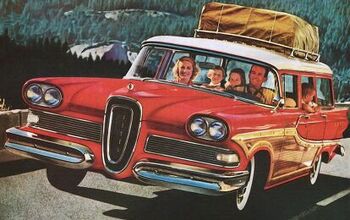
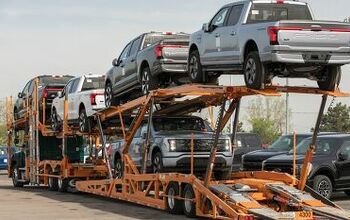

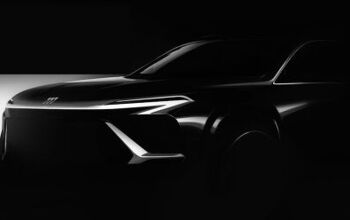
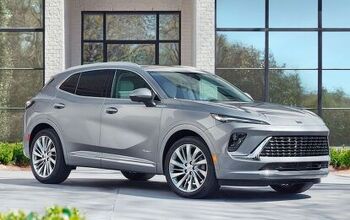
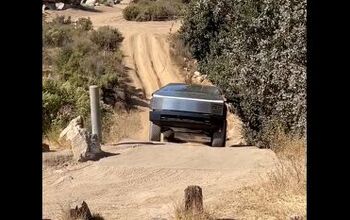
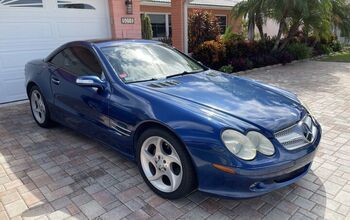


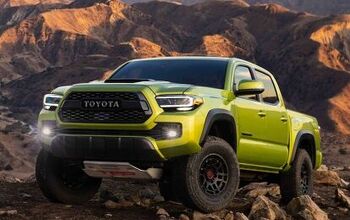

Comments
Join the conversation
That sales literature (I assumed that's what it is) that talks about selling "prestige" seems more than a little over-the-top. It was hardly secret that you could buy a full-size Chevrolet and option it out until it was practically a Cadillac. Not many went that far, but more than a few bought a Bel Aire with the largest available V-8 plus a few other choice options and so far as I know were pleased with what they got (and what they paid for it). That and, of course, the confusion about whether Edsel was slotted above or below Mercury (which must have made it difficult to sell that "prestige"). Poor ol' Edsel Ford: he had the misfortune in life to live under the shadow of his father only to die of cancer before he could assume his place as the heir-apparent. And in death to get the most famous brand-launch failure in history named after him! TANJ
I owned a 1958 Edsel. 4 door ,white and red. Push button trans in middle of steering wheel. Purchased for $300 in 1964. Hard 40,000iles on it. Drove it for 10,000 miles and sold it for $300. Wish I still had it.